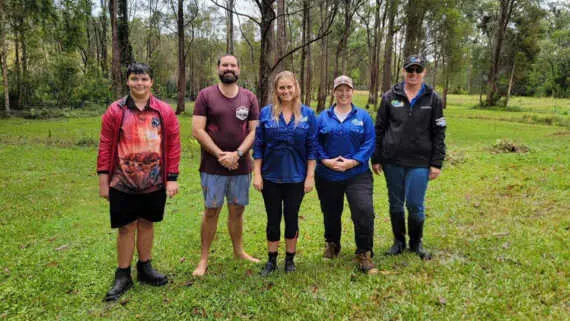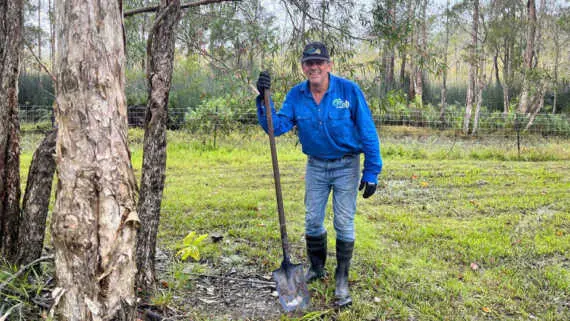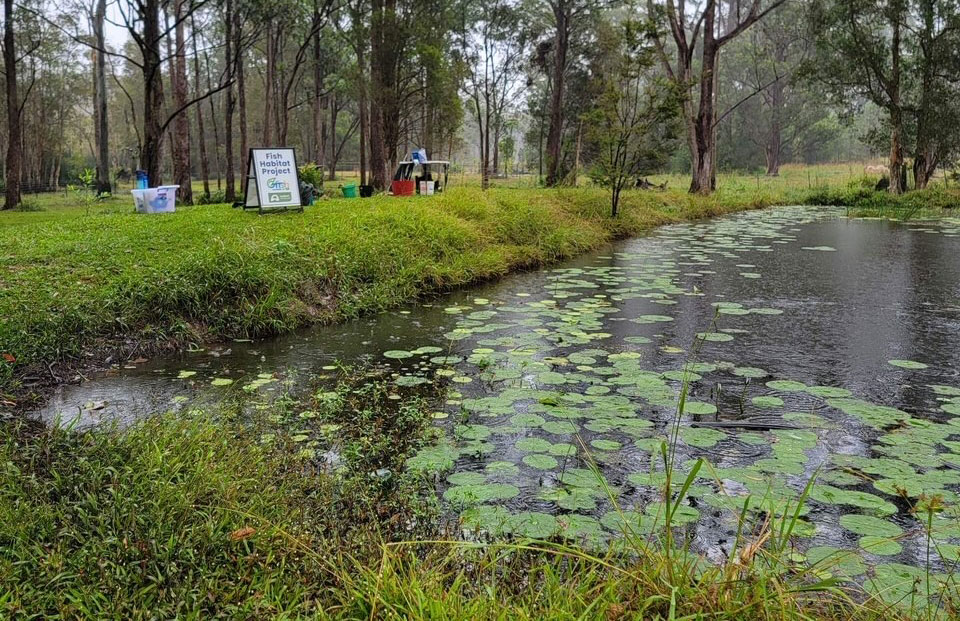150 Trees
planted
50 Gambusia
removed
12 volunteers
supported
In collaboration with Coffs Harbour Regional Landcare, the OzFish Coffs Harbour Chapter came together on a rainy afternoon with a shared purpose—to breathe new life into a local wetland and support native fish.

Rescuing the Wetland: Combatting Invasive Species
Beyond the beauty of the trees, the restoration day involved addressing the threat of invasive species. Volunteers worked diligently to remove weeds and planted 150 native trees to fortify the wetland’s natural defenses. The initiative centers on the strategic planting of native trees, thoughtfully chosen to amplify the natural balance of the ecosystem. These trees play pivotal roles in water filtration, sediment stabiliaation, and the creation of thriving fish habitats.
Removal of the mosquito fish
A primary threat to the native fish population was the invasive mosquito fish, Gambusia, introduced from North America. In a proactive move, our team utilised trapping nets to remove these aggressive invaders. Initially introduced for mosquito control, Gambusia proved unsuccessful and posed a threat to native fish by competing for resources and displaying aggressive behavior. Their predatory habits, including nipping the fins of other fish and preying on the eggs and larvae of native fish and frogs, necessitated our intervention.

75 trees and shrubs, including native ginger, hard quandong (Elaeocarpus obovate) and NSW davo plum (Davidsonia jerseyana) were planted, which will provide fruits and nuts for native fauna.

Planting native trees
The initiative focuses on the strategic planting of native trees, carefully selected to enhance the natural balance of the ecosystem. These trees play a crucial role in water filtration, sediment stabilisation, and habitat creation. OzFish volunteers, in collaboration with Coffs Harbour Regional Landcare, have worked tirelessly to transform a once boggy and waterlogged area into a thriving haven for native fish.
Recognising the importance of sustainable drainage, our volunteers planted the area with 75 varieties of grasses, including resilient species like Lomandra and Dianella. These grasses not only contribute to the overall aesthetics of the landscape but also serve as a natural solution to water management, ensuring the longevity of our environmental efforts.
Donate to OzFish today to help projects like this one across Australia.
The project is part of OzFish’s Driving Fish Habitat Action partnership with Landcare NSW, with funding support from the NSW Recreational Fishing Trusts and BCF – Boating, Camping, Fishing.




